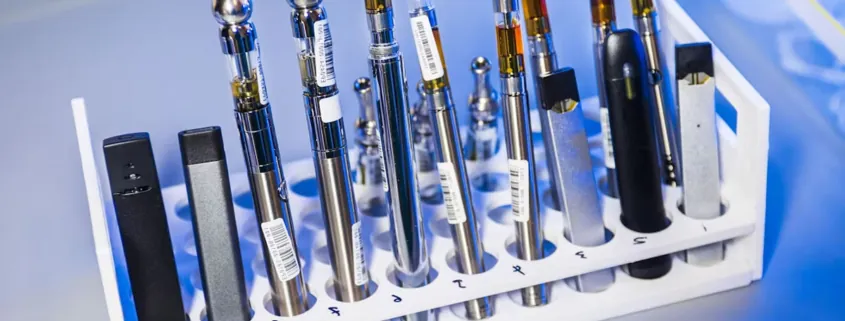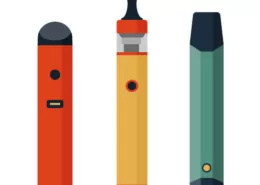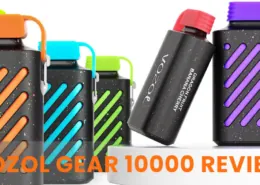Vaping Evolution – Who Invented The First Vape?
The Origins of Vaping
Early Concepts of Vapor Inhalation
The idea of inhaling vaporized substances has been around for centuries, with various civilizations attempting to vaporize substances for different purposes. In 1927, Joseph Robinson made a significant stride in the history of vaping by inventing the first electric vaporizer. This groundbreaking invention paved the way for future innovations and laid the foundation for the modern vaping industry.
Throughout history, notable devices like The Volcano, a tabletop vaporizer developed by German entrepreneur Markus Storz in 1996, have contributed to the evolution of vapor inhalation technology. These innovations have played a crucial role in shaping how people consume vaporized substances.
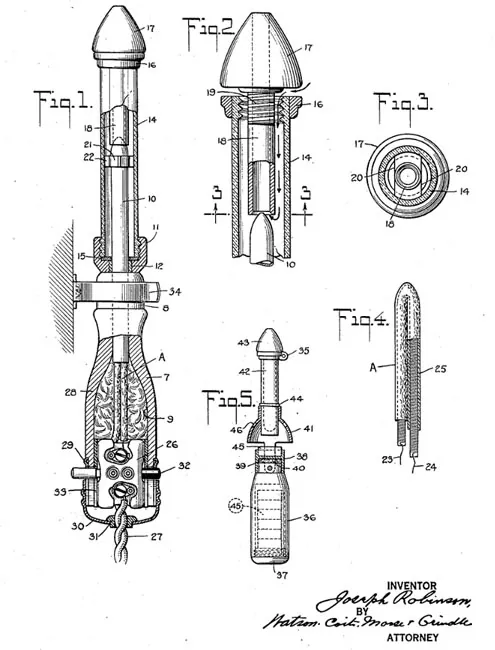
The Role of Herbert A. Gilbert
Herbert A. Gilbert revolutionized the vaping industry through his pioneering inventions in the 1960s. His creation of the first electronic vaporizer and a device resembling the modern e-cigarette marked a turning point in the development of vaping technology.
In 1963, Gilbert patented an electronic vaporizer, offering a safer alternative to smoking tobacco. This invention not only transformed how individuals consumed nicotine but also set the stage for future advancements in vaping technology.
The early concepts of vapor inhalation and Herbert A. Gilbert’s groundbreaking inventions laid the groundwork for the remarkable evolution of vaping from its inception to its widespread popularity today.
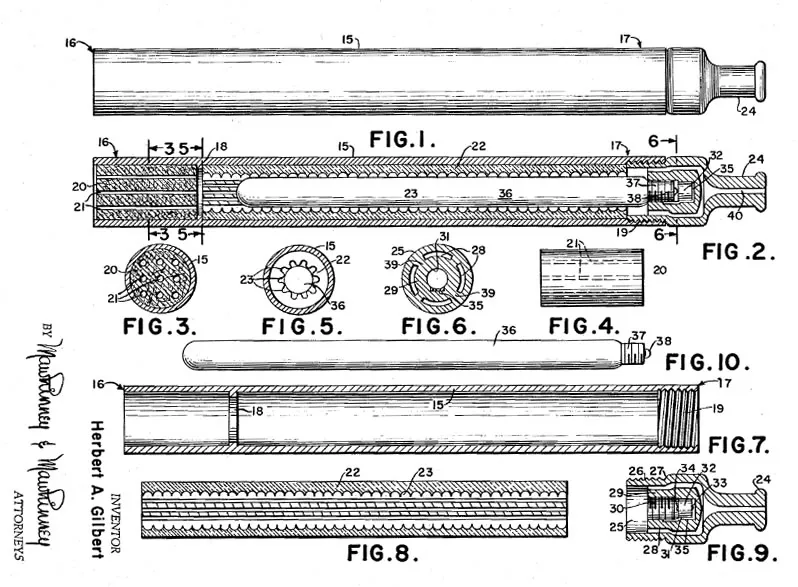
The Invention of the Modern E-Cigarette
The creation of the modern e-cigarette marked a significant turning point in the history of vaping. Understanding who invented vaping is crucial to comprehending the evolution of this revolutionary device.
Who Invented Vaping?
Hon Lik: The Pharmacist Behind the Revolution
The modern e-cigarette was invented by Hon Lik, a Chinese pharmacist, in 2003. Hon Lik’s innovative design and patented technology revolutionized smoking cessation methods and paved the way for a new era of nicotine consumption.
Hon Lik’s groundbreaking invention, as documented in the patent titled “Electronic cigarette,” introduced a novel approach to delivering nicotine without the harmful effects associated with traditional tobacco smoking. The patent details an electronic cigarette comprising a liquid storage component and a shared central longitudinal axis among stacked components of a housing, a hollow porous component, and a heating coil.
Hon Lik’s expertise as a pharmacist played a pivotal role in developing an effective and user-friendly alternative to conventional smoking. His dedication to improving public health through innovative solutions led to the creation of an electronic cigarette that has since transformed countless lives around the world.
The Motivation Behind the Invention
A Personal Journey to Quit Smoking
Hon Lik’s motivation to invent the modern e-cigarette stemmed from his personal struggle with smoking addiction. Having experienced firsthand the detrimental effects of traditional cigarettes on his health, he embarked on a mission to find a safer alternative that could help individuals overcome their nicotine dependence.
Driven by his passion for improving public health, Hon Lik channeled his expertise and determination into creating an innovative solution that would provide smokers with a less harmful way to satisfy their nicotine cravings. His personal journey to quit smoking fueled his commitment to developing an effective smoking cessation aid that prioritized user safety and satisfaction.
The Evolution of Vaping Technology
As vaping gained popularity, the early days were marked by a series of challenges and breakthroughs that shaped the evolution of vaping technology. Manufacturers faced significant hurdles in creating devices that effectively delivered nicotine while ensuring user safety. However, these challenges spurred innovation and led to groundbreaking advancements in the industry.
The transition from concept to market posed numerous obstacles, including developing efficient battery systems, enhancing e-liquid delivery mechanisms, and addressing safety concerns. Overcoming these challenges required extensive research and development efforts to create reliable and user-friendly vaping devices.
Amidst these challenges, technological advancements in vaping have significantly transformed the landscape of nicotine consumption. The integration of temperature control technology has revolutionized the vaping experience, allowing users to customize their device settings for optimal enjoyment . This advancement ensures that users can consistently achieve their desired vapor density and flavor profiles with precision.
Moreover, improvements in battery life have been a focal point for manufacturers seeking to enhance the portability and convenience of vaping devices. Advanced battery technologies have extended device usage between charges, providing users with prolonged satisfaction without frequent recharging interruptions .

Technological Advancements in Vaping
In recent years, the vaping industry has witnessed remarkable progress in enhancing battery life and e-liquid delivery systems. These advancements have been pivotal in improving user experience and safety standards.
Improvements in Battery Life
The future of vaping technology looks promising with the development of more advanced mods and batteries that offer extended usage times and enhanced performance. As technology continues to evolve, smarter devices are on the horizon, capable of connecting to the internet for remote customization of vaping experiences. Additionally, these devices may track usage patterns and provide personalized suggestions for optimizing the overall vaping experience.
Enhanced E-liquid Delivery
Technological innovations have also focused on refining e-liquid delivery systems to ensure consistent vapor production and flavor delivery. The integration of smart features such as LED displays and Bluetooth app synchronization demonstrates a commitment to enhancing user interaction with vaping devices while prioritizing safety and ease of use.
Furthermore, ongoing research and development efforts within the cannabis vaporizer market are driving product lines towards sleeker designs with added features aimed at enriching the overall vaping experience. These developments underscore an industry-wide dedication to making vaping safer, more accessible, and enjoyable for consumers.
Vaping Today: Impacts and Considerations
As vaping continues to gain momentum, it is essential to examine the current landscape of the global vaping market, including emerging trends and consumer behavior. Additionally, understanding the health and regulatory impacts of vaping is crucial in evaluating its long-term implications.
The Global Vaping Market
Trends and Consumer Behavior
Recent surveys have shed light on the evolving trends and consumer behavior within the vaping industry. One notable finding is that a significant percentage of individuals, particularly youth and young adults, are drawn to e-cigarettes due to the availability of diverse flavors. In fact, 77.9% and 90.3% of respondents cited flavors as a primary reason for using e-cigarettes.
This growing preference for flavored e-cigarettes has also been observed among adolescents, with 81% reporting that they used flavors during their initial experience with e-cigarettes. Furthermore, students have predominantly opted for flavored e-cigarettes, indicating a clear inclination towards diverse flavor options in the vaping market.
The widespread appeal of flavored e-cigarettes underscores the importance of flavor variety in shaping consumer preferences and driving market demand. Manufacturers have responded by continually expanding their flavor offerings to cater to diverse taste preferences, thereby influencing consumer choices and consumption patterns.

Health and Regulatory Impacts
Ongoing Research and Legislation
In response to the rapid expansion of the vaping industry, ongoing research efforts are underway to assess its health implications and inform regulatory measures. The prevalence of flavored e-cigarette use among youth has prompted extensive investigations into its potential health effects.
Recent studies have highlighted concerns regarding the impact of flavored e-cigarettes on adolescent initiation and sustained use. These findings have spurred legislative initiatives aimed at regulating flavor availability and marketing strategies targeting young consumers.
Notably, policymakers are actively considering measures to restrict access to flavored e-cigarettes as part of broader efforts to mitigate youth vaping rates. This includes proposed regulations on flavor sales restrictions and stringent advertising guidelines tailored towards curbing underage usage.
Moreover, ongoing research endeavors seek to comprehensively evaluate the safety profile of vaping products while addressing public health concerns associated with long-term usage. By examining factors such as nicotine addiction, respiratory health implications, and product safety standards, researchers aim to provide evidence-based insights that can inform future regulatory frameworks.
These concerted efforts underscore a proactive approach towards safeguarding public health while fostering responsible industry practices within the evolving landscape of vaping technology.
Final Thoughts
The Legacy of Hon Lik
How Vaping Changed the Smoking Landscape
Hon Lik’s pioneering invention of the modern e-cigarette has left an indelible mark on the smoking landscape, ushering in a transformative era for nicotine consumption. By introducing a safer alternative to traditional tobacco smoking, Hon Lik revolutionized public health initiatives and empowered individuals to make informed choices about their nicotine intake.
The widespread adoption of vaping as a smoking cessation aid has significantly reduced the prevalence of conventional cigarette use, contributing to a decline in smoking-related health issues. A 2020 Truth Initiative study published in Addictive Behaviors found that teens and young adults enrolled in the Truth Initiative quit vaping program “This is Quitting” said they were driven to quit because of concerns about health (50.9%), cost (21.7%), the desire to be free from addiction (16%), and social factors such as others’ impressions of them (10.1%) .
Moreover, Hon Lik’s invention has empowered countless individuals to embark on journeys towards nicotine independence, fostering a culture of informed decision-making and proactive health management. As more individuals transition from traditional cigarettes to vaping, the societal perception of smoking has evolved, with vaping emerging as a viable harm reduction strategy.

ECIGATOR
Ecigator is one of the well-known vape brands spun off from FM Technology Co., Ltd, it’s an ISO-certified disposable vape manufacturer for OEMs, ODMs, and OBM since 2010. The founder team comes from top firms with more than 10 years of experience in the vaping industry and has devoted thousands of hours to providing users with a better and better experience.
The Future of Vaping
Innovations and Challenges Ahead
The future of vaping holds promise for continued innovations that prioritize user safety and satisfaction while addressing emerging challenges within the industry. Manufacturers are actively pursuing advancements in technology and product design to enhance the overall vaping experience and meet evolving consumer needs.
Notably, research published in Nicotine & Tobacco Research in 2020 revealed that nearly two-thirds of adult e-cigarette users reported plans to quit e-cigarettes for good. Similarly, trends among adolescents indicate a growing consideration for quitting vaping, underscoring an evolving mindset towards nicotine consumption among younger demographics.
However, alongside these positive developments, challenges persist within the vaping landscape. NBC News documented impactful testimonials from teenage athletes expressing feelings of depression and lack of motivation due to vaping. These accounts shed light on the complexities surrounding nicotine addiction among youth and emphasize the need for targeted interventions tailored towards this demographic.
As regulatory measures continue to evolve in response to shifting consumer behaviors and public health considerations, it is imperative for industry stakeholders to collaborate on implementing responsible practices that safeguard user well-being while fostering innovation.
In navigating these opportunities and challenges, the future trajectory of vaping hinges on collaborative efforts aimed at promoting harm reduction strategies, supporting individuals seeking nicotine independence, and advancing technological solutions that prioritize user safety.
- Bestselling Vapes in UK After Disposable Ban: What to Stock 2025 - August 8, 2025
- Argentina Debates Stricter Vape Laws Amid Prohibition Failures - August 8, 2025
- Nigeria Advocacy Group Urged to Hike Tobacco & Vape Tax by 100% - August 8, 2025

